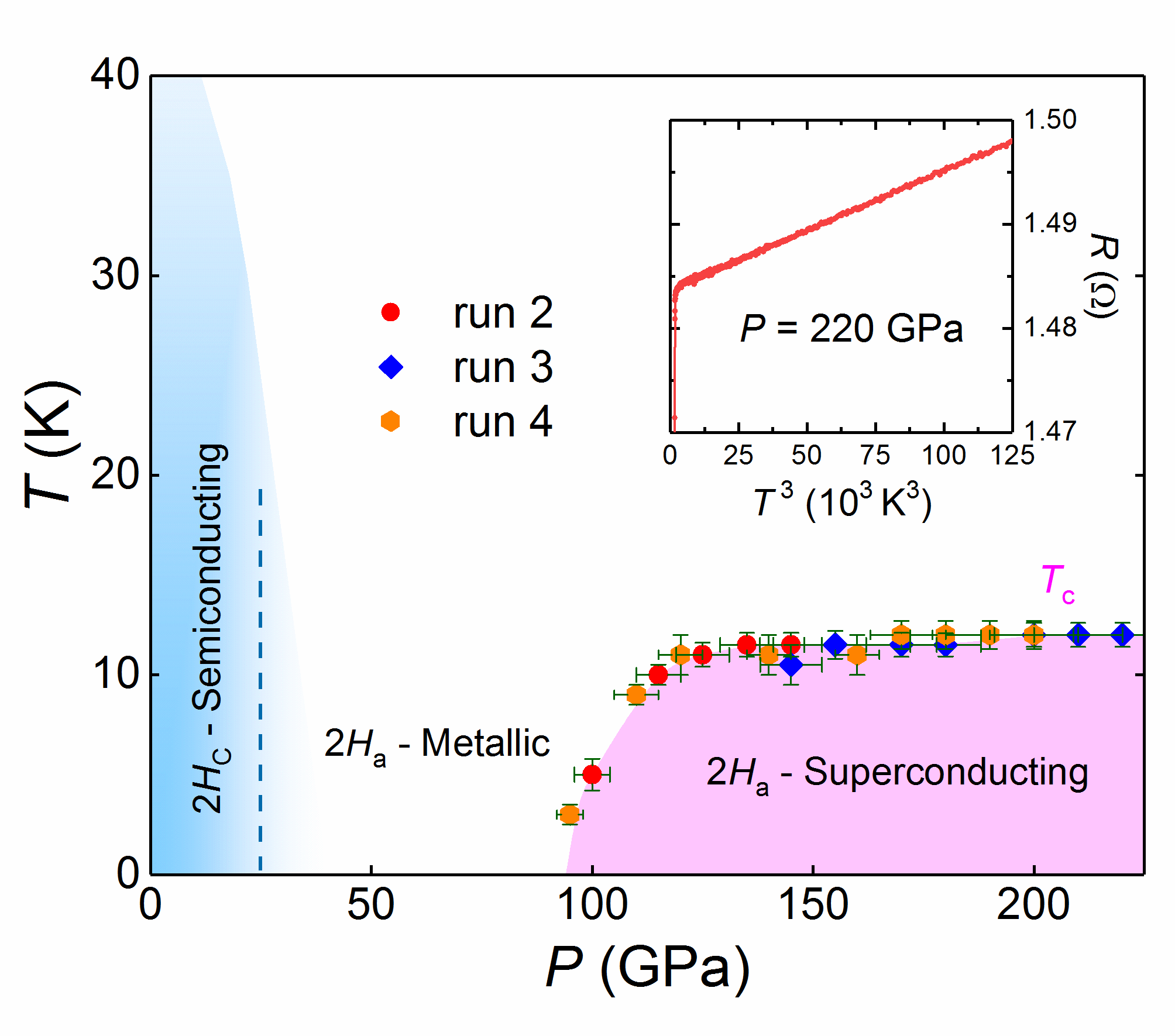
Researchers have discovered a material that can conduct electricity without dissipation, or superconduct, at extremely high pressures that only exist underneath the Earth. The new material, which is the first to possess this kind of robust superconductivity, is described in a paper issued earlier last week in Physical Review Letters and also is highlighted as Editors' Suggestion.
The material is a member of binary compounds known as transition metal dichalcogenides (TMDs) with the chemical formula MX2 (M=Ti, Nb, Ta, Mo, W; X=S, Se, Te), which are composed of transition metal elements and chalcogen atoms.
TMDs are interesting in terms of electronic ground states, such as charge-density wave (CDW), Mott insulator, excitonic insulator, semiconductor, semimetal, metal and even superconductor at ambient pressure.
The TMDs studied in this work is unique in that it can superconduct only at extremely high pressures-beyond one million of atmospheric pressure. This discovery was made by a joint team of Institute of Solid State Physics and High Magnetic Field Laboratory of the Chinese Academy of Sciences.
The TMDs they studied is molybdenum disulfide (MoS2).
Pressure is a viable physical tuning parameter in inducing superconductivity neatly in the materials that otherwise wouldn't exhibit this phenomenon at ambient pressure.
Here, the group applied pressure to molybdenum disulfide using a diamond anvil cell (DAC), a device that uses the polished facets of two diamonds, the hardest materials in nature, to squeeze a sample placed between them.
To generate sufficiently high pressure to perform the measurements on molybdenum disulfide, the diameter of each diamond's culet, the tip at the bottom of the gem, is 100 microns (millionths of a meter), which is about the diameter of a human hair.
To track the possible structural changes at ultrahigh pressure, the group used synchrotron-based x-ray diffraction (XRD) at the Advanced Photon Source of Argonne National Laboratory. XRD allows researchers to gain structural information on a crystalline sample based on the pattern the x-rays make after they diffract away from the atoms in the sample.
They combined this technique with complementary measurements of resistivity and magnetoresistance to characterize the superconductivity.
The results show that superconductivity emerges in molybdenum disulfide with an onset critical temperature Tc of ca. 3 K at ca. 90 GPa. Upon further increasing the pressure, Tc is rapidly enhanced beyond 10 K and stabilized at ca. 12 K over a wide pressure range up to 220 GPa.
Through density functional theory (DFT) calculations, the researchers attribute the pressure-induced superconductivity in molybdenum disulfide to the pressure-induced emergence of a new flat Fermi pocket in the electronic structure.
The finding represents an alternative strategy to achieve superconductivity in molybdenum disulfide in addition to chemical intercalation and electrostatic gating, and offers the first experimental realization of pressure-induced superconductivity with a record-high Tc of 12 K in a pristine CDW-free 2H polymorph of TMDs.
This investigation was supported by the National Key Research and Development Program of China and the National Natural Science Foundation of China.

Figure 1. Micrograph of sample in contact with four electrodes inside the DAC. (Image by CHI Zhenhua)

Figure 2. Pressure-temperature phase diagram of MoS2. (Image by CHI Zhenhua)

86-10-68597521 (day)
86-10-68597289 (night)

86-10-68511095 (day)
86-10-68512458 (night)

cas_en@cas.cn

52 Sanlihe Rd., Xicheng District,
Beijing, China (100864)

